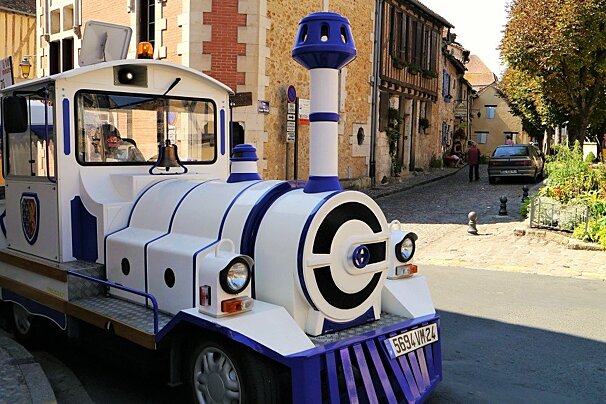
Le Petit Train de Bergerac
Discover the historic town of Bergerac during this 30-35 minute tour of the towns most famous sights and features.

© Le Quercy Hotel, Brive-la-Gaillarde
Chic & contemporary retreat in picturesque Brive-la-Gaillarde
Recently renovated in 2013, the hotel is now a delightful contemporary, yet comforting setting from which you can explore the region. Just a 5 minute stroll will take you to the centre of town or down to the River Correze. It is also located opposite the famous market place of "Georges Grassens".
There are a total of 48 air-conditioned and sound-proofed rooms to choose from, each of which has been tastefully decorated with 'Zen', 'Chic' or 'Cosy' as a theme. An apartment is also available on the 7th floor and offers stunning panoramic views.
A continental or American breakfast will be laid on each morning and can be enjoyed in the dining area or out on the terrace in the sun.
The hotel is also well equipped to accommodate for seminars and meetings for up to 50 people, with a number of set packages available to choose from.
The hotel works in partnership with La Truffe Noir restaurant, which is just a short walk away. The dining room is open, stylish and hugely inviting and offers up modern French cuisine which makes the most of the fine local produce, of course including the synonymous black truffle.
All children are welcome and those under the age of 2 using a cot and one under the age of 6 using an existing bed are able to stay for free.

Discover the historic town of Bergerac during this 30-35 minute tour of the towns most famous sights and features.
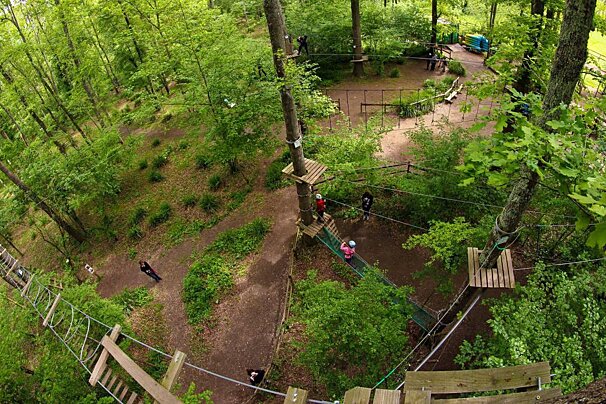
Just 5 minutes from Cahors, in Pradines, there are a multitude of activities on offer from acrobatic courses in the trees, to paintball, kayaking, hiking, orienteering and much much more.

100% electric and 100% silent, the infamous tuk-tuk comes to Saint Emilion to take you on a tour or the town and the vineyards that surround it.

This wildlife park is dedicated to the Barbary Macaque monkey who roams free in the 20 hectares of woodland.

From tree climbing to paintballing and even via ferrata, the Foret des Ecureuils Adventure Park has plenty of offer all ages.

Enjoy a relaxing day close to nature as you canoe along the river and explore the waterways of this UNESCO World Biosphere Reserve.
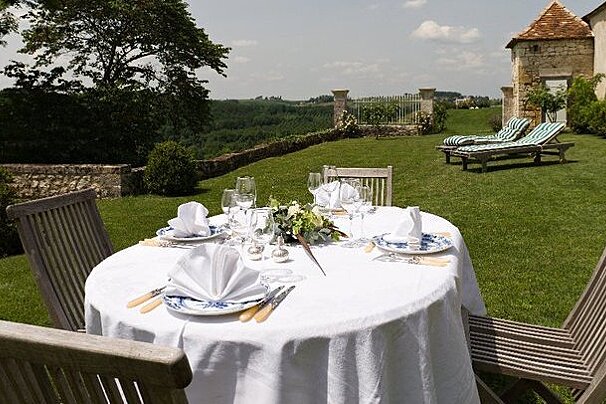
The dining rooms allow for views of the surrounding vineyards and rolling hills. Drinks can also be enjoyed in the small library or among the chestnut trees.

This elegant and sophisticated two Michelin star restaurant offers creative dishes designed by chef Cédric Béchade, who plays with colours and textures in his cuisine.

The restaurant boasts an innovative menu with a focus on fine local fare and seemless service. The very word Les Merles stands for honesty and delightfulness, which is reflected throughout the dining experience.
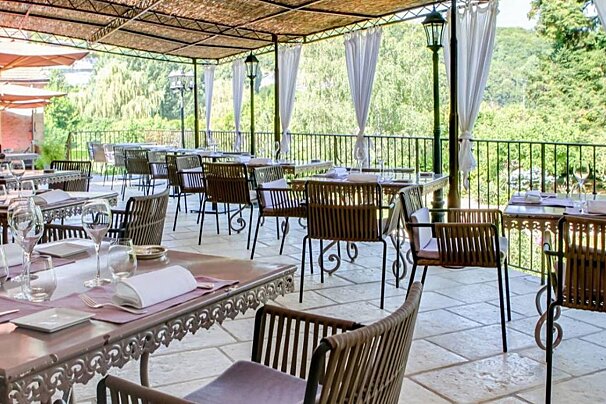
With their very own garden, the restaurant has access to the freshest fruit, vegetables, edible flowers and herbs. This is reflected in the menu, which makes the most of the regions famous culinary delights, including foie gras and of course Perigords black diamond, the truffle. You will easily settle into the cosy, contemporary restaurant or get to enjoy your surroundings while dining out on the terrace.

Located in the world capital of the truffle, at this small hotel, the truffle has become the main feature.
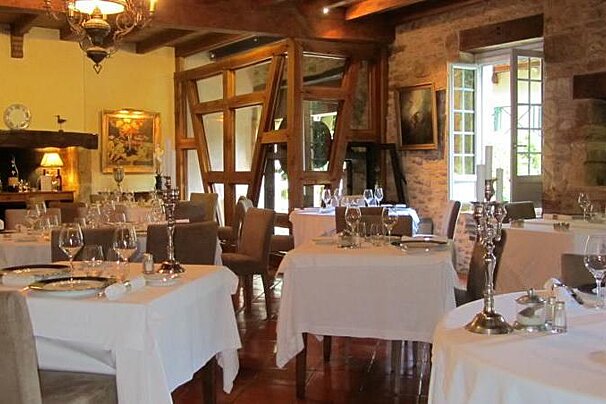
A bright restaurant with stone walls, old wooden beams, fireplace and inviting allure, offer up culinary delights from the region. A strong focus is on local local treats and seasonality.
Housed in the Hôtel de Labenche, a Renaissance building from the 16th century, this museum traces the archaeological history of the city from prehistoric to the middle ages. It has a large collection of finds and includes the oldest preserved Eucharistic dove in Europe which dates to the 11th century. Coming to more recent history, it has collections representing the cultural development of the city and a collection of English Mortlake tapestries from the 17th century.
This museum in the centre of Brive covers the Second World War and the Resistance. It is housed in the former home of Edmond Michelet, a key resistor who was arrested by the Germans in 1943 and sent to the concentration camp at Dachau. He survived and returned to France in 1945 and went on to become Minister for the Armed Forces under the de Gaulle government. His studies on the Resistance won him literary prizes and his home has become a study centre as well as a museum. Many of the museum's collections were gifts from former resistance fighters and it houses an exceptional collection of over 400 propaganda posters.
This is a contemporary floral park in the town of Varetz created in 2008 to pay tribute to the author Sidonie-Gabrielle Colette. The park has a guided tour offering a fun way to discover the botanical interests of this author as you wander through its six gardens.
Designed by Kathryn Gustafson, a visit here tells a story, and is a journey through the gardens of history. The guided tour is excellent, describing ancient woods believed to have been inhabited by gods, more contemporary water features and a garden of over 2,000 roses which blends the old with the new.
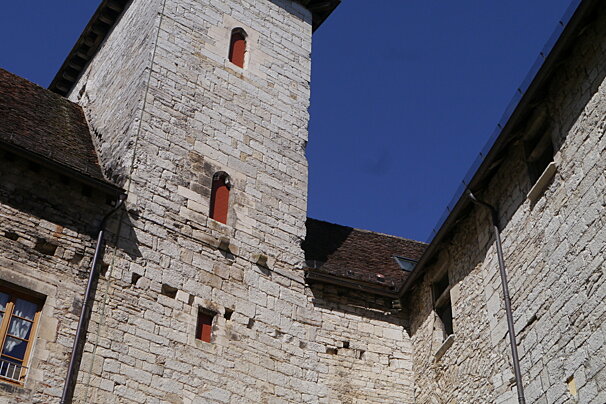
The Palais de la Raymondie stands next to the market hall in the heart of the medieval town of Martel. This museum contains objects dating from paleolothic, neolithic and Gallo-Roman occupations.
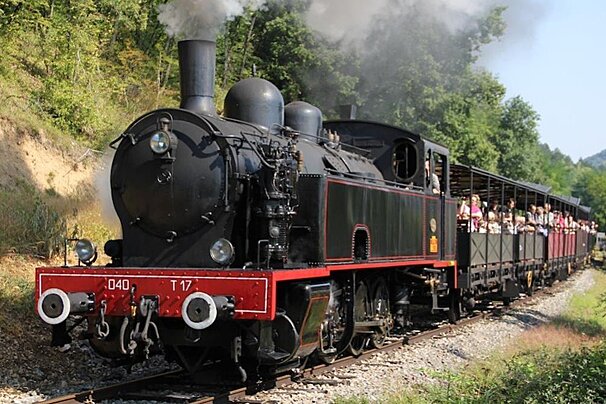
Also known as the Truffle train, it will take you on a journey of 8 miles (13 Km) round trip, more than 80 meters (260 feet) high cliff, giving a wonderful panorama of the Dordogne Valley.
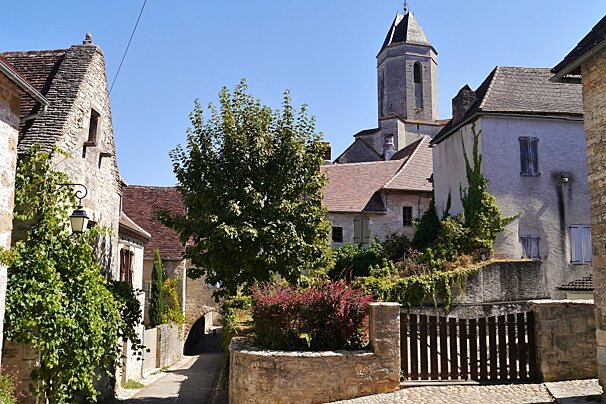
The town of Martel is not, in fact, famous for the brandy (that's Martell with two ll's) but is well known as the capital of truffles and a great producer of walnuts, two of the region's specialities.

A base for exploring the region, Souillac has a medieval past and is filled with Romanesque-style sculptures.

The pretty old town of Montignac serves as a good base for visiting the nearby prehistoric caves.

Carennac has been previously voted 'One of the 'Most Beautiful Villages in France' and it's easy to see why. The blonde stone and red-brown roofs of its buildings have tall chimneys and are adorned with creepers that turn red in the autumn.

This medieval town on a bend in the Dordogne grew around its 9th century Benedictine abbey of Saint-Pierre.

Standing out as one of the most charming towns in the region, this medieval dwelling remains much as it was when it was built in the 14th century.